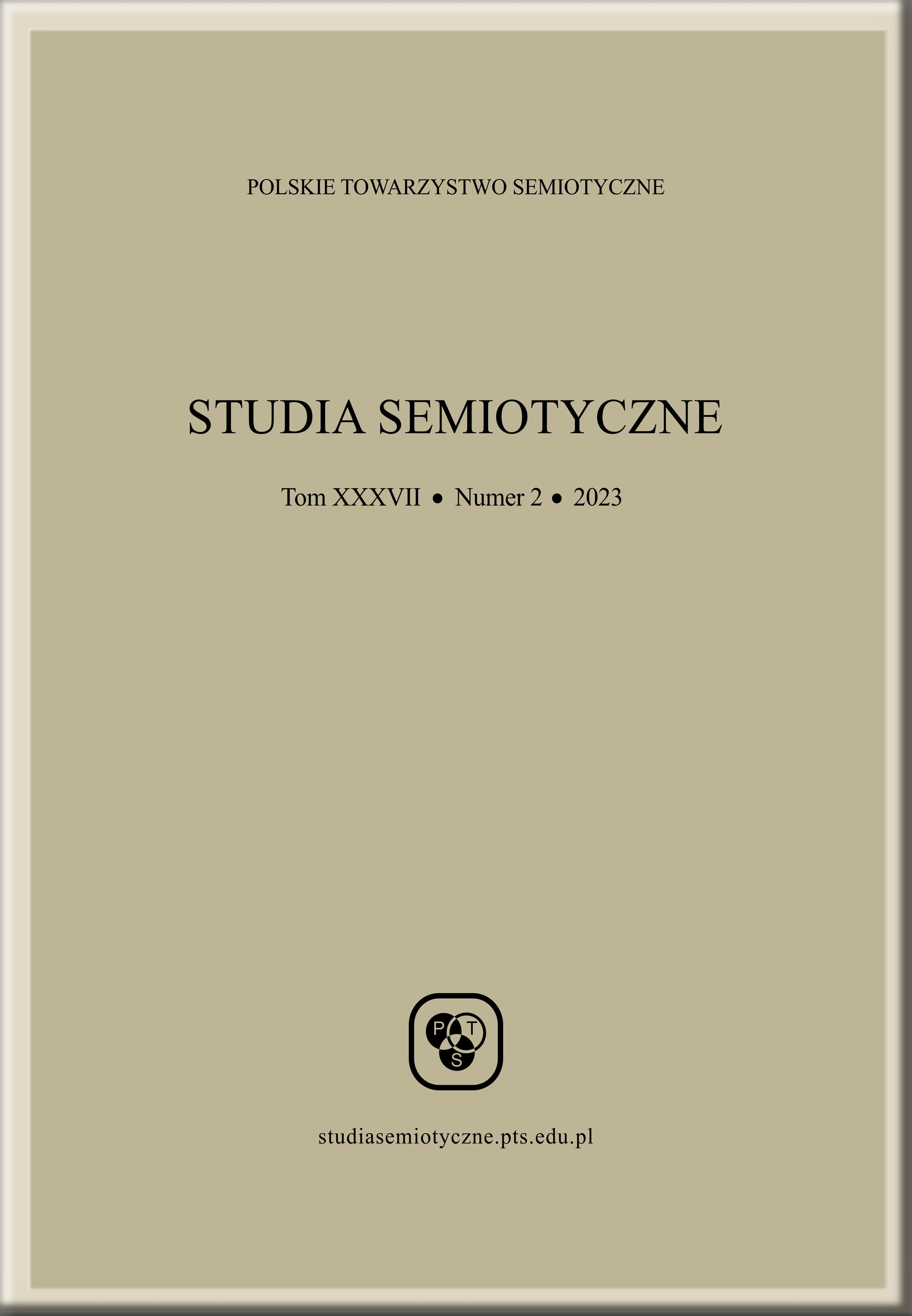Abstract
DOI: https://doi.org/10.26333/sts.xxxvii2.07
In this paper I propose a way of saving the traditional view of contents and attitudes from the threat posed by famous scenarios such as Perry’s messy shopper. I argue that, with the solution I suggest, traditionally construed beliefs and contents can play all the roles we traditionally want them to play, including the notoriously problematic explanation of action. I dub the view laid out here the Double Belief Theory because it analyzes de se attitudes as, in fact, two conjoined beliefs, one of which is a second-order belief about the other.
References
Baumann, P. (2017). If You Believe You Believe, You Believe. A Constitutive Account of Knowledge of One’s Own Beliefs. Logos and Episteme, 389–416.
Bekoff, M., Sherman, P. (2004). Reflections on Animal Selves. Trends in Ecology and Evolution, 19(4), 176–180.
Cappelen, H., Dever, J. (2013). The Inessential Indexical: On the Philosophical Insignificance of Perspective and the First Person. Oxford: OUP.
Castañeda, H.-N. (1966). “He”: A Study in the Logic of Self-Consciousness. Ratio, 8, 130–157.
Castañeda, H.-N. (1967). Indicators and Quasi-Indicators. American Philosophical Quarterly, 4(2), 85–100.
Ciecierski, T. (2020). An Approach to Indexical Beliefs. Organon F, 27(3), 346–376.
de Ponte, M., Korta, K., Perry, J. (2023). Critical Pragmatics: Nine Misconceptions. Topoi, 42(4), 913–923.
Festinger, L. (1957). A Theory of Cognitive Dissonance. Redwood: Stanford University Press.
García-Carpintero, M. (2016). Token-Reflexive Presuppositions and the De Se. In S. Torre, M. García-Carpintero (Eds.), About Oneself: De Se Thought and Communication (pp. 179–199). Oxford: OUP.
García-Carpintero, M. (2017). The Philosophical Significance of the De Se. Inquiry: An Interdisciplinary Journal of Philosophy, 60(3), 253–276.
Heyes, C. M. (1994). Reflections on Self-Recognition in Primates. Animal Behaviour, 47(4), 909–919.
Kaplan, D. (1989). Demonstratives. In J. Almog, J. Perry, H. Wettstein (Eds.), Themes From Kaplan (pp. 481–563). Oxford: OUP.
Kindermann, D. (2016). Varieties of Centering and De Se Communication. In M. García-Carpintero, S. Torre (Eds.), About Oneself. De Se Thought and Communication (pp. 307–340). Oxford: OUP.
Korta, K., Perry, J. (2011). Critical Pragmatics: An Inquiry Into Reference and Communication. New York: Cambridge University Press.
Kripke, S. A. (1979). A Puzzle About Belief. In A. Margalit (Ed.), Meaning and Use (pp. 239–283). Dordrecht: Reidel.
Lewis, D. (1979). Attitudes De Dicto and De Se. Philosophical Review, 88(4), 513–543.
Magidor, O. (2015). The Myth of the De Se. Philosophical Perspectives, 29(1), 249–283.
Ninan, D. (2010). De Se Attitudes: Ascription and Communication. Philosophy Compass, 5(7), 551–567.
Ninan, D. (2016). What is the Problem of De Se Attitudes? In S. Torre, M. García-Carpintero (Eds.), About Oneself: De Se Thought and Communication (pp. 86–120). Oxford: OUP.
Perry, J. (1977). Frege on Demonstratives. Philosophical Review, 86(4), 474–497.
Perry, J. (1979). The Problem of the Essential Indexical. Noûs, 13, 3–21.
Perry, J. (2006). Stalnaker and Indexical Belief. In J. J. Thomson, A. Byrne (Eds.), Content and Modality: Themes From the Philosophy of Robert Stalnaker (pp. 204–221). Oxford: OUP.
Povinelli, D. J., Vonk, J. (2004). We Don’t Need a Microscope to Explore the Chimpanzee’s Mind. Mind and Language, 19(1), 1–28.
Rudnicki, J. (2021). Centred Propositions, What is Asserted, and Communication. Theoria, 87(1), 187–206.
Shillito D. J., Gallup G. G. Jr., Beck B. B. (1999). Factors Affecting Mirror Behaviour in Western Lowland Gorillas, Gorilla gorilla. Animal Behaviour, 57(5), 999–1004.
Shoemaker, S. (1995). Moore’s Paradox and Self-Knowledge. Philosophical Studies, 77(2–3), 211–28.
Stalnaker, R. (1999a). Assertion. In R. Stalnaker, Context and Content: Essays on Intentionality in Speech and Thought (pp. 78–95). Oxford: OUP.
Stalnaker, R. (1999b). Indexical Belief. In R. Stalnaker, Context and Content: Essays on Intentionality in Speech and Thought (pp. 130–149). Oxford: OUP.
Stalnaker, R. (1999c). Belief Attribution and Context. In R. Stalnaker, Context and Content: Essays on Intentionality in Speech and Thought (pp. 150–166). Oxford: OUP.
Tomasello, M., Call, J. (2006). Do Chimpanzees Know What Others See—or Only What They Are Looking At? In S. Hurley, M. Nudds (Eds.), Rational animals? (pp. 371–384). Oxford: OUP.
Tomasello, M., Rakoczy, H. (2003). What Makes Human Cognition Unique? From Individual to Shared to Collective Intentionality. Mind & Language, 18(2), 121–147.
Torre, S. (2010). Centered Assertion. Philosophical Studies, 150(1), 97–114.
Weber, C. (2013). Centered Communication. Philosophical Studies, 166(1), 205–223.
Weber, C. (2016). Being at the Centre: Self-Location in Thought and Language. In M. García-Carpintero, S. Torre (Eds.), About Oneself: De Se Thought and Communication (pp. 246–271). Oxford: Oxford University Press.


